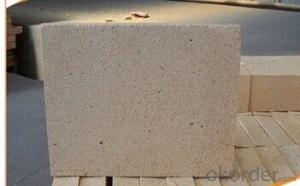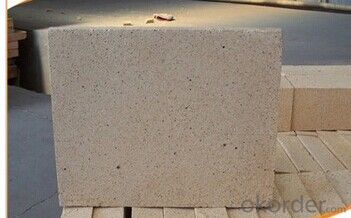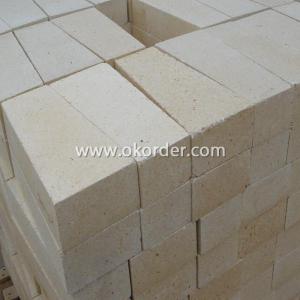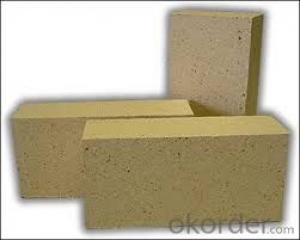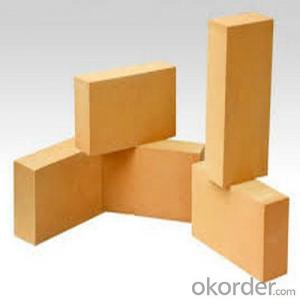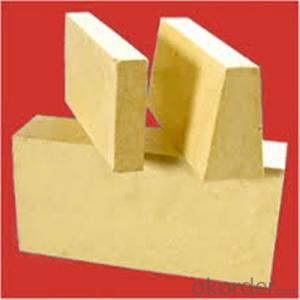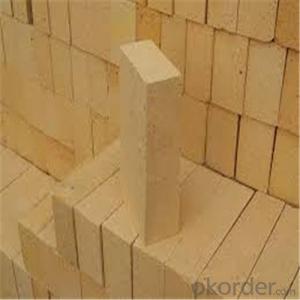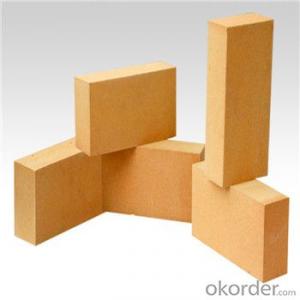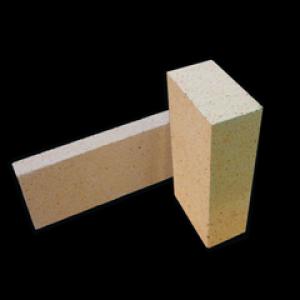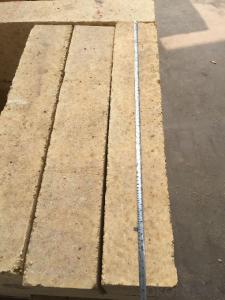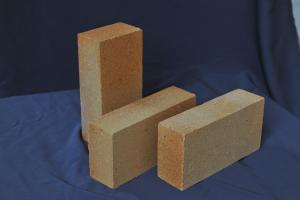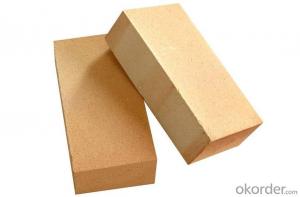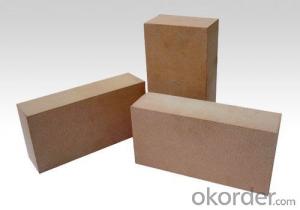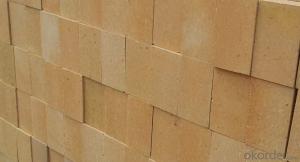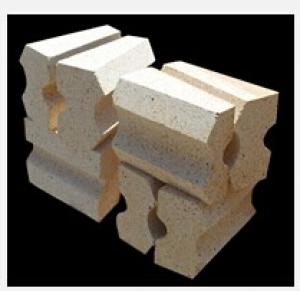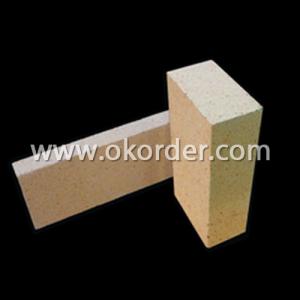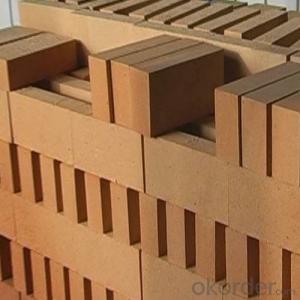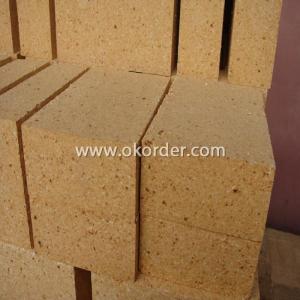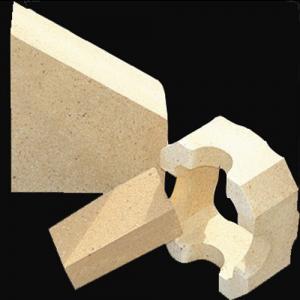Large Fireclay Clay Bricks
- Loading Port:
- China Main Port
- Payment Terms:
- TT OR LC
- Min Order Qty:
- -
- Supply Capability:
- -
OKorder Service Pledge
OKorder Financial Service
You Might Also Like
Specifications
Refractory brick
1. Low thermal conductivity
2. Long service life, easy operation
3.cheapness
4.the most widely used
Features:
1. Low thermal conductivity, good thermal insulation performance.
2. Long service life, easy operation, could be shaped freely
3. Product specification: standard form, normal standard, shaped and special shaped bricks.
4. Can be used in various kilns because of its cheapness and general tray package. Among all of the refractory materials, it is the most widely used.
Applications:
1. Carbon bake furnaces in the aluminum industry
2. Preheat zones and cyclones of rotary cement kilns
3. Insulation for glass tanks
4. Fireplace and pizza ovens
5. Coke ovens
6. Blast furnaces
7. Reheating furnaces
8. Suspended roofs
9. Lime kilns
10. Chimney
Technical data:
Item | SK-30 | SK-32 | SK-34 | SK-36 | SK-38 |
AL2O3 % (min) | 30-35% | 35-38% | 38-42% | 50-55% | 60-65% |
Fe2O3% (max) | 3 | 3 | 2.8 | 2.5 | 2.3 |
Refractoriness | ≥1670°C | ≥1690°C | ≥1710°C | ≥1750°C | ≥1770°C |
Refractoriness under load, 0.2MPa, (°C) | ≥1270 | ≥1350 | ≥1350 | ≥1430 | ≥1450 |
Apparent porosity (%) | 20-24 | 20-24 | 19-23 | 18-22 | 18-22 |
Bulk density (g/cm³) | 2.00-2.05 | 2.05-2.1 | 2.1-2.15 | 2.15-2.25 | 2.25-2.35 |
Cold crushing strength (MPa) | ≥25 | ≥30 | ≥35 | ≥45 | ≥50 |
Thermal expansion at 1000°C (%) | ≤0.6 | ≤0.55 | ≤0.55 | ≤0.4 | ≤0.4 |
- Q: There are various refractory materials inside many kilns such as refractory brick, what is the role of masonry of these refractory materials?
- High temperature prevention, warmth keeping and heat insulation.
- Q: How can refractory bricks be punched?
- refractory bricks, ordinary refractory bricks, electric drill is ok corundum brick, need buy special drill
- Q: Refractory brick, high alumina brick, magnesia chrome brick, magnesia brick, clay brick, which type of brick has the highest refractory temperature?
- It depends. if high alumina brick is used in kiln, its temperature is above 1700 degree, clay brick is between 1500 degree to 1750 degree, magnesia bricks and magnesia-chrome bricks are about 1500 degree to 1650 degree.
- Q: What is the refractory temperature of refractory bricks?
- First look at the used parts of refractory brick, anti stripping performance, these are the most basic performance factors, the refractory temperature of high alumina brick is 1770 -1790 degree, the refractory temperature of clay brick is 1380-1570 DEG C, record the anti acid corrosion data of refractory bricks, the compressive strength of refractory bricks, at the same time, you should analyze each part of the furnace pH index and sintering temperature of working. When purchasing refractory bricks, you need to pay attention to many factors, high temperature creep property, softening temperature under a fixed load, 6548, volume stability at high temperature. Because the production of the product is affected by the weather and fuel energy, etc.. 186, select the suitable refractory bricks
- Q: What is the best color of refractory brick
- Clay refractory brick: Yellow and deep yellow; acid-proof brick: Red, high alumina brick Beige, a little white; square viewing brick: Yellow, red, white, gray, brown, brown, nigger-brown and so on; color is just one aspect of the selection of refractory bricks, it mainly is to see the inherent quality
- Q: What kind of refractory brick is used for industrial furnace?
- What kiln? Glass kiln, ceramic kiln, or blast furnace?
- Q: What are the main constituents in non clay brick sintering?
- Sintered clay brick, it is through the mining soil, brick making, modulation, drying, roasting and cooling produced, roasting coal amount is solid sintered clay brick coal blending amount of 20-60%, the amount of coal to ensure product's surface.
- Q: What is the difference between the refractory brick and the thermal insulation brick
- Refractory bricks are used in the stove, in order to prevent from burnouting the stove under high temperature. Thermal insulation brick is used for preserving heat, is to heat preservation
- Q: What is the perservation method for refractory bricks used for cement kiln?
- The place should be dry and ventilated. Remember that the packaging can't be damaged. If is not used for a long time, put desiccant next to the bricks. Then have thermoplastic packaging again, it won't get damp. Under normal circumstances, it can be stored for 3-5 years and won't be hairy
- Q: does the electric kiln burner need to be sealed?
- seal when open the kiln, and observe the temperature, when the temperature reaches a point, you can move the firebrick away, and continue observing the temperature to decide whether to seal it or not, but do not seal it completely, repeat the procudure until reach the sinter point or skill requirement.
Send your message to us
Large Fireclay Clay Bricks
- Loading Port:
- China Main Port
- Payment Terms:
- TT OR LC
- Min Order Qty:
- -
- Supply Capability:
- -
OKorder Service Pledge
OKorder Financial Service
Similar products
Hot products
Hot Searches
Related keywords
